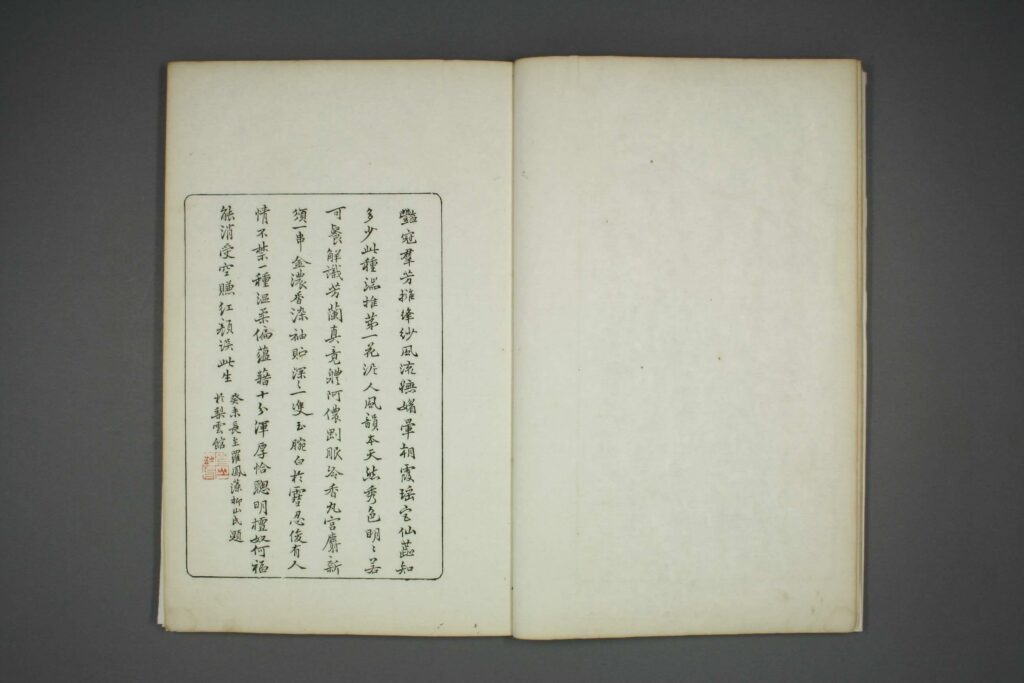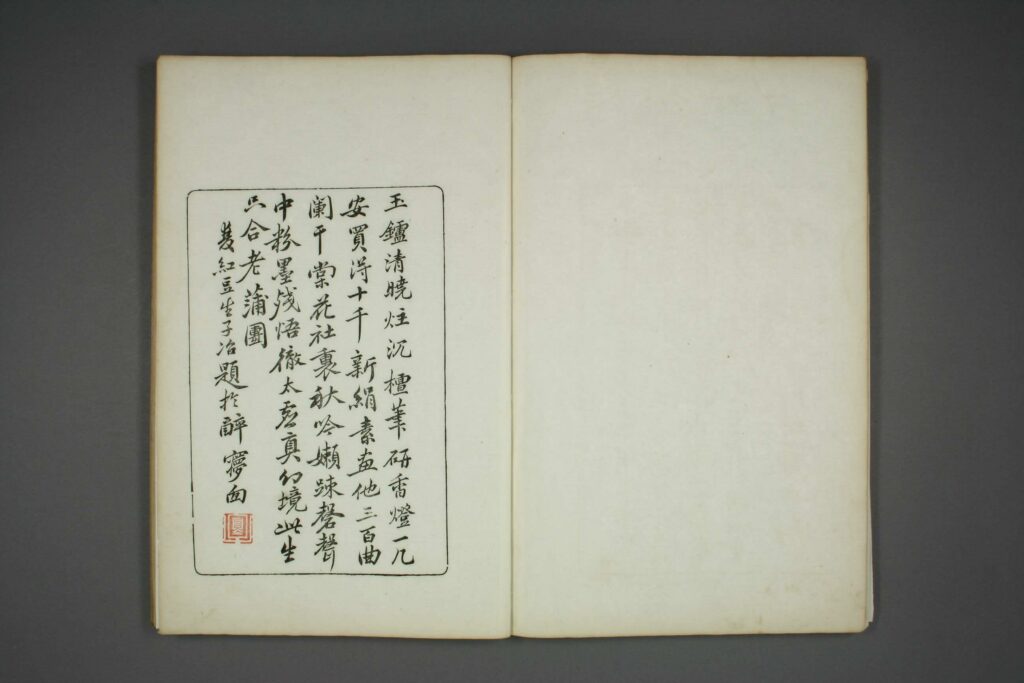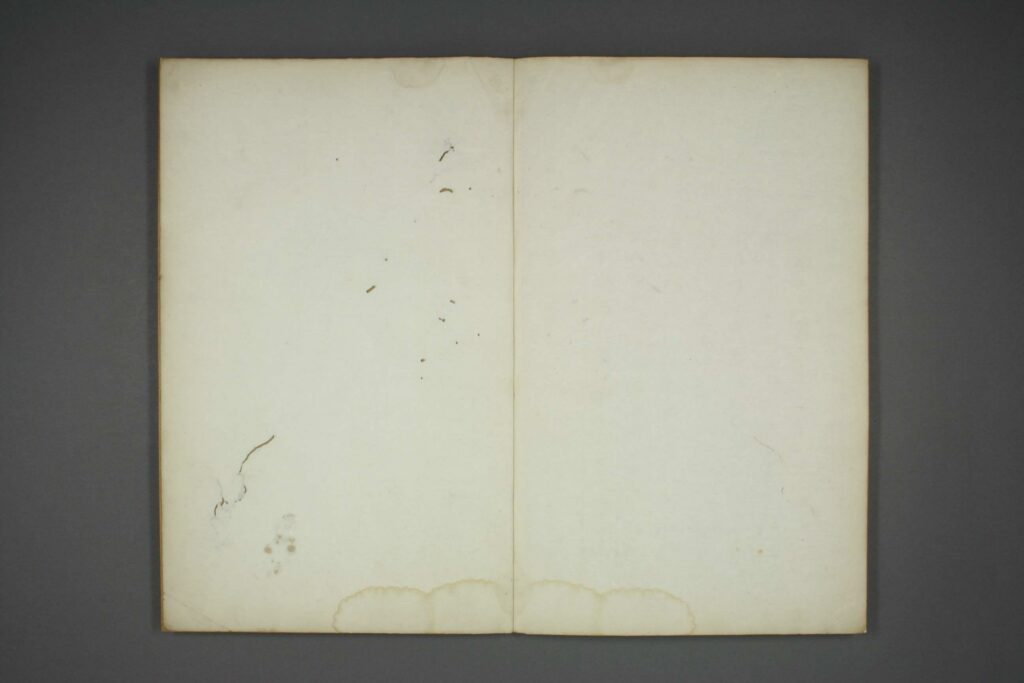- Masterpiece名著:彩绘金瓶梅(98P):2024年-02月-23日
- Masterpiece名著:精绘红楼梦插图(50P):2024年-02月-23日
- Masterpiece名著:《戴敦邦新绘全本红楼梦》.上海古籍出版社(242P):2024年-02月-19日
- Masterpiece名著:《红楼梦群芳图谱》(69P):2024年-02月-19日
- Masterpiece名著:红楼梦图咏.4册(156P):2023年-01月-01日
- Lilliputian连环画:红楼梦之16宝玉出走(丁世弼)(123P):2022年-11月-12日
- Lilliputian连环画:红楼梦之15巧姐避祸(丁世弼)(123P):2022年-11月-12日
- Lilliputian连环画:红楼梦之14查抄贾府(杨秋宝)(179P):2022年-11月-12日
- Lilliputian连环画:红楼梦之13黛玉焚稿(戴敦邦)(171P):2022年-11月-12日
- Lilliputian连环画:红楼梦之12金桂之死(杨秋宝)(131P):2022年-11月-11日
- Lilliputian连环画:红楼梦之11潇湘惊梦(戴敦邦.施瑞康.陈令长)(147P):2022年-11月-11日
- Lilliputian连环画:红楼梦之10抄检大观园(赵延平.冯正梁)(195P):2022年-11月-11日
- Lilliputian连环画:红楼梦之09红楼二尤(项维仁)(203P):2022年-11月-11日
- Lilliputian连环画:红楼梦之08宝玉瞒赃(汪继声.汪溪)(139P):2022年-11月-10日
- Lilliputian连环画:红楼梦之07鸳鸯抗婚(汪继声.汪溪)(91P):2022年-11月-10日
- Lilliputian连环画:红楼梦之06二进荣国府(冯正梁.赵延平)(115P):2022年-11月-10日
- Lilliputian连环画:红楼梦之05宝玉受笞(杨秋宝)(123P):2022年-11月-10日
- Lilliputian连环画:红楼梦之04黛玉葬花(徐晓平)(195P):2022年-11月-09日
- Lilliputian连环画:红楼梦之03熙凤弄权(李宁远.丁纯一)(107P):2022年-11月-09日
- Lilliputian连环画:红楼梦之02宝黛初会(杨秋宝)(115P):2022年-11月-09日
- Lilliputian连环画:红楼梦之01乱判葫芦案(杨秋宝)(99P):2022年-11月-09日
- China国内合集:《红楼梦》200多张高清原图(210P):2022年-05月-02日
- China国内合集:100张红楼梦插图,绝世珍藏!(100P):2022年-05月-02日
此《红楼梦图咏》为清代李光禄原辑,改琦绘图。全书共四册,描绘红楼梦主要人物形象约五十五人(始于:通灵宝石绛珠仙草、警幻仙子,终于:北静王、甄宝玉),插图五十幅,每幅图后附有名人题咏。此为长玉版,最早为清光绪五年淮浦居士重编印行。此书最初绘制的确切年代难以考证,这书中每一幅图画均附有名人题咏,有些题有纪年,有些则无。其中纪年最早的是姜皋、顾恒、高崇瑚、瞿应绍等人题于丙子年(嘉庆二十一年〉,纪年最晚的是顾顷波题于乙巳年(道光二十五年),前后相差二十九年。在众多题词中,有张问陶题词三篇,均未署纪年,但张问陶去世于甲戌年(嘉庆十九年),可见此书有可能绘制于嘉庆十九年之前,至少这三幅在那时已经完成,时年改琦四十一岁,也正是创作颠峰之际。改琦逝于道光八年,这书中有许多篇题词是改琦逝世后才题写的。依书前淮浦居士题记的说法,这部《红楼梦图咏》是改琦下榻吾园时为李光禄所作。初刻本问世后,因为刻工技术精良,能体现改琦作品的神韵,衣饰线条流畅,人物含蓄传神,处处表现出 “闲静时如姣花照水,行动处似弱柳扶风” 的气质,是一部清末杰出的人物版画图籍,甚受时人喜爱。日本著名红学家伊藤漱平在所撰《红楼梦图画》一文中提到,他所收藏的《红楼梦图咏》初刻本中有光绪十年孙谿逸士朱槐庐所写的跋文,跋文中说:“…,经淮浦居士付之剞劂,公之艺林,诚盛举也。近外间竟有翻刻本,虽依样葫芦而神气索然。” 此书初刊于光绪五年,而到光绪十年就有翻刻本出现,可见此书当时受欢迎的情况。第一册 “黛玉” 一幅图画中之 “玉” 字有长扁之别,原刻本 “玉” 字较扁,翻刻本 “玉” 字较长。伊藤漱平在文章中说,原刻本与翻刻本的区别,除了板框的尺寸与钤印有异之外,画中人物的名字笔划,原刻横长,翻刻纵长,并举 “黛玉” 一幅作为说明。故以扁玉字本为佳。此文元堂翻刻本,是民国十年杨耀松所刊,全书分元、亨、利、贞四册,在每一版框右下角栏线外有标示序号。虽然卷前有吴熙的序,说此版片是杨耀松购得之淮浦居士原刊板片,并将其重印。而且有牌记曰:浙江文元堂楊氏珍藏板,但从实物来看,文元堂本与光绪五年原刊有极大的差异,系翻刻板,非重印本。
This “Ode to a Dream of Red Mansions” is the original edition of Li Guanglu in the Qing Dynasty. The book consists of four volumes, depicting about fifty-five main characters of the Dream of Red Mansions (beginning with the channeling gemstones, red beads, fairy grass, and finally, the king of Beijing and Zhen Baoyu), and fifty illustrations, each with a celebrity title. This is the Changyu version, which was first printed by Huaipu residents in the fifth year of the Guangxu reign of the Qing Dynasty. It is difficult to verify the exact date of the original drawing of this book. Every picture in this book is accompanied by a famous person’s chant, some of which have a chronology and some have no. Among them, Jiang Gao, Gu Heng, Gao Chonghu, Qu Yingshao and others wrote the first chronicle in the third year (the 21st year of Jiaqing), and Gu Qingbo wrote the last chronicle in the fifth year of Yisi (the 25th year of Daoguang), with a difference of 29 years. Among the numerous inscriptions, there are three inscriptions by Zhang Wentao, none of which is dated. However, Zhang Wentao died in the year of Jiaxu (the 19th year of Jiaqing). It can be seen that this book may have been painted before the 19th year of Jiaqing. At least these three inscriptions were completed at that time, when he was 41 years old, it was also the peak of his creation. Gaiqi died eight years ago in Daoguang. Many of the inscriptions in this book were written after his death. According to the inscription of Huaipu residents before the book, this “Dream of Red Mansions” was written by Li Guanglu when Gaiqi stayed in our garden. After the first edition came out, because of its excellent carving technology, it can reflect the verve of Gaiqi’s works. The lines of clothing are smooth, and the characters are subtle and vivid. It shows the temperament of “being like a beautiful flower shining on the water in leisure, and acting like a weak willow supporting the wind” everywhere. It is an outstanding figure print book in the late Qing Dynasty, and is very popular with people at that time. In the article “Pictures of a Dream of Red Mansions” written by the famous Japanese Redology scholar Ito Shuping, he mentioned that the first edition of “Ode to a Dream of Red Mansions” in his collection contained the postscript written by Zhu Huailu, a scholar of Sun Xi Yi in the 10th year of Guangxu’s reign. The postscript said: “…, after the Huaipu scholars paid for it, the public art forest will be held in a grand way. There are even copies of the book in the near and outside, although they are just like a gourd.” The book was first published in the fifth year of Guangxu’s reign, In the 10th year of the reign of Guangxu, reprinted editions appeared, which shows the popularity of the book at that time. The word “jade” in the picture of “Daiyu” in Volume I has a long and flat character. The original version of the word “jade” is relatively flat, while the translated version of the word “jade” is relatively long. Ito Shuping said in his article that the difference between the original and the copy is that the size of the frame and the seal are different. In addition, the name strokes of the characters in the painting are both horizontal and vertical, and the “Daiyu” picture is taken as an illustration. Therefore, the flat jade character is preferred. This copy of the text in Yuantang was published by Yang Yaosong in the 10th year of the Republic of China. The book is divided into four volumes: Yuan, Heng, Li and Zhen. The serial number is marked outside the line at the lower right corner of each edition box. Although there is a preface of Wu Xi in front of the volume, it is said that this edition is the original edition of Huaipu Jushi that Yang Yaosong bought and reprinted. And there is a sign that says: Zhejiang Wenyuantang Yang’s collection board, but from the physical point of view, the Wenyuantang version is very different from the original magazine of Guangxu five years, which is a stereotyped version, not a reprinted version.




























































































































































Culture文化 Masterpiece名著 156P 红楼梦图咏.4册
历史上的今天 ( 7 ):
- 2024年-01月-01日:N64:Tetrisphere 图形方块
- 2024年-01月-01日:N64:Tetris 64 N64俄罗斯方块
- 2024年-01月-01日:N64:Taz Express 大嘴怪塔兹
- 2024年-01月-01日:N64:Tarzan 人猿泰山
- 2024年-01月-01日:N64:Susume Taisen Puzzle Dama-Toukon Marutama Chou 前进智力对战方块
- 2024年-01月-01日:N64:Superman-The New Superman Aventures 超人
- 2024年-01月-01日:News新闻:2024年1月1日新闻简报(国内国际)
可点 ➠ 2023年-01月-01日 ➠ 21 s ➠ ♥ 0

